目录
- 一、JDBC和MyBatis的简介和比较
- 1)MyBatis介绍
- 2)JDBC问题总结如下
- 3)Mybatis解决jdbc编程的问题
- 二、创建项目和配置
- 1)创建SpringBoot项目
- 2)创建包和文件(以及文件代码)
- 三、数据库表的创建
- 四、结果
- 五、总结
- 六、参考链接
一、JDBC和MyBatis的简介和比较
1)MyBatis介绍
MyBatis 本是apache的一个开源项目iBatis, 2010年这个项目由apache software foundation 迁移到了google code,并且改名为MyBatis,实质上Mybatis对ibatis进行一些改进。
MyBatis是一个优秀的持久层框架,它对jdbc的操作数据库的过程进行封装,使开发者只需要关注 SQL 本身,而不需要花费精力去处理例如注册驱动、创建connection、创建statement、手动设置参数、结果集检索等jdbc繁杂的过程代码。
Mybatis通过xml或注解的方式将要执行的各种statement(statement、preparedStatemnt、CallableStatement)配置起来,并通过java对象和statement中的sql进行映射生成最终执行的sql语句,最后由mybatis框架执行sql并将结果映射成java对象并返回。
2)JDBC问题总结如下
1、 数据库链接创建、释放频繁造成系统资源浪费从而影响系统性能,如果使用数据库链接池可解决此问题。
2、 Sql语句在代码中硬编码,造成代码不易维护,实际应用sql变化的可能较大,sql变动需要改变Java代码。
3、 使用preparedStatement向占有位符号传参数存在硬编码,因为sql语句的where条件不一定,可能多也可能少,修改sql还要修改代码,系统不易维护。
4、 对结果集解析存在硬编码(查询列名),sql变化导致解析代码变化,系统不易维护,如果能将数据库记录封装成pojo对象解析比较方便。
3)Mybatis解决jdbc编程的问题
1、 数据库链接创建、释放频繁造成系统资源浪费从而影响系统性能,如果使用数据库链接池可解决此问题。
解决:在SqlMapConfig.xml中配置数据链接池,使用连接池管理数据库链接。
2、 Sql语句写在代码中造成代码不易维护,实际应用sql变化的可能较大,sql变动需要改变java代码。
解决:将Sql语句配置在XXXXmapper.xml文件中与java代码分离。
3、 向sql语句传参数麻烦,因为sql语句的where条件不一定,可能多也可能少,占位符需要和参数一一对应。
解决:Mybatis自动将java对象映射至sql语句,通过statement中的parameterType定义输入参数的类型。
4、 对结果集解析麻烦,sql变化导致解析代码变化,且解析前需要遍历,如果能将数据库记录封装成pojo对象解析比较方便。
解决:Mybatis自动将sql执行结果映射至java对象,通过statement中的resultType定义输出结果的类型。
二、创建项目和配置
1)创建SpringBoot项目
1.打开IDEA,file–>new–>project:
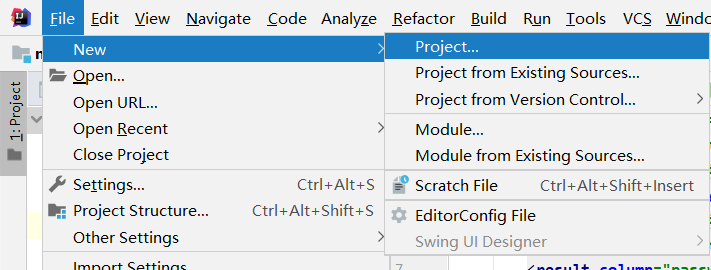
2.选择spring initializr,再next:
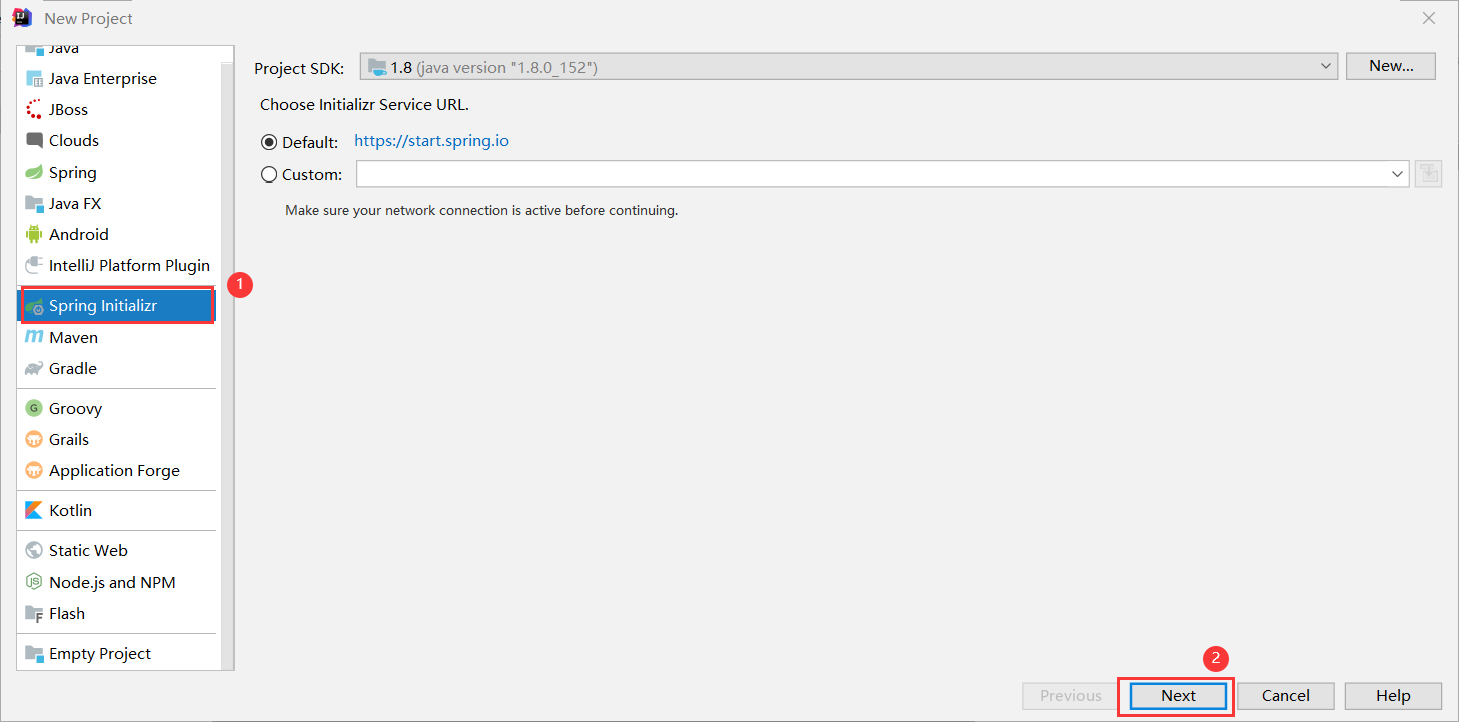
3.自主命名,选择java versions为8,再next:
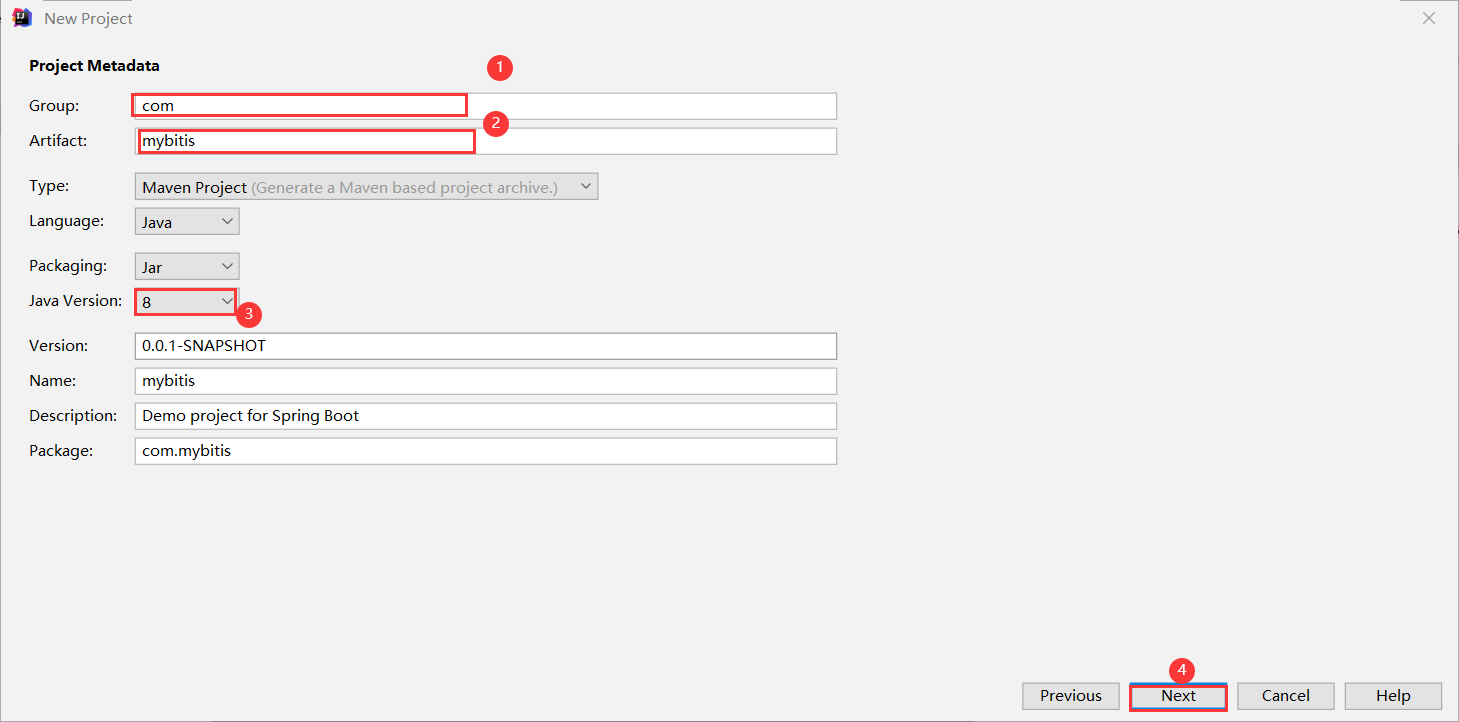
4.点击web,选择spring web:
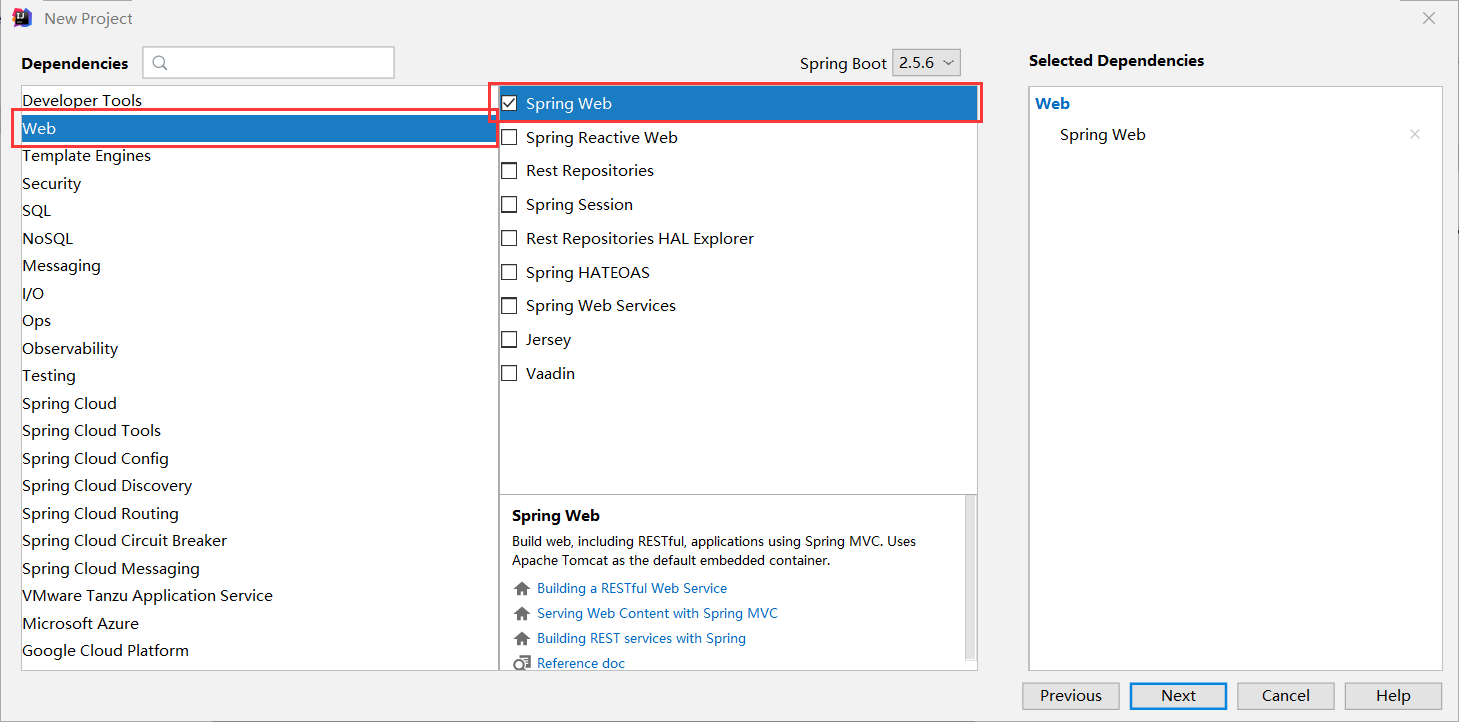
5.点击SQL,选择三个(如图),再next:
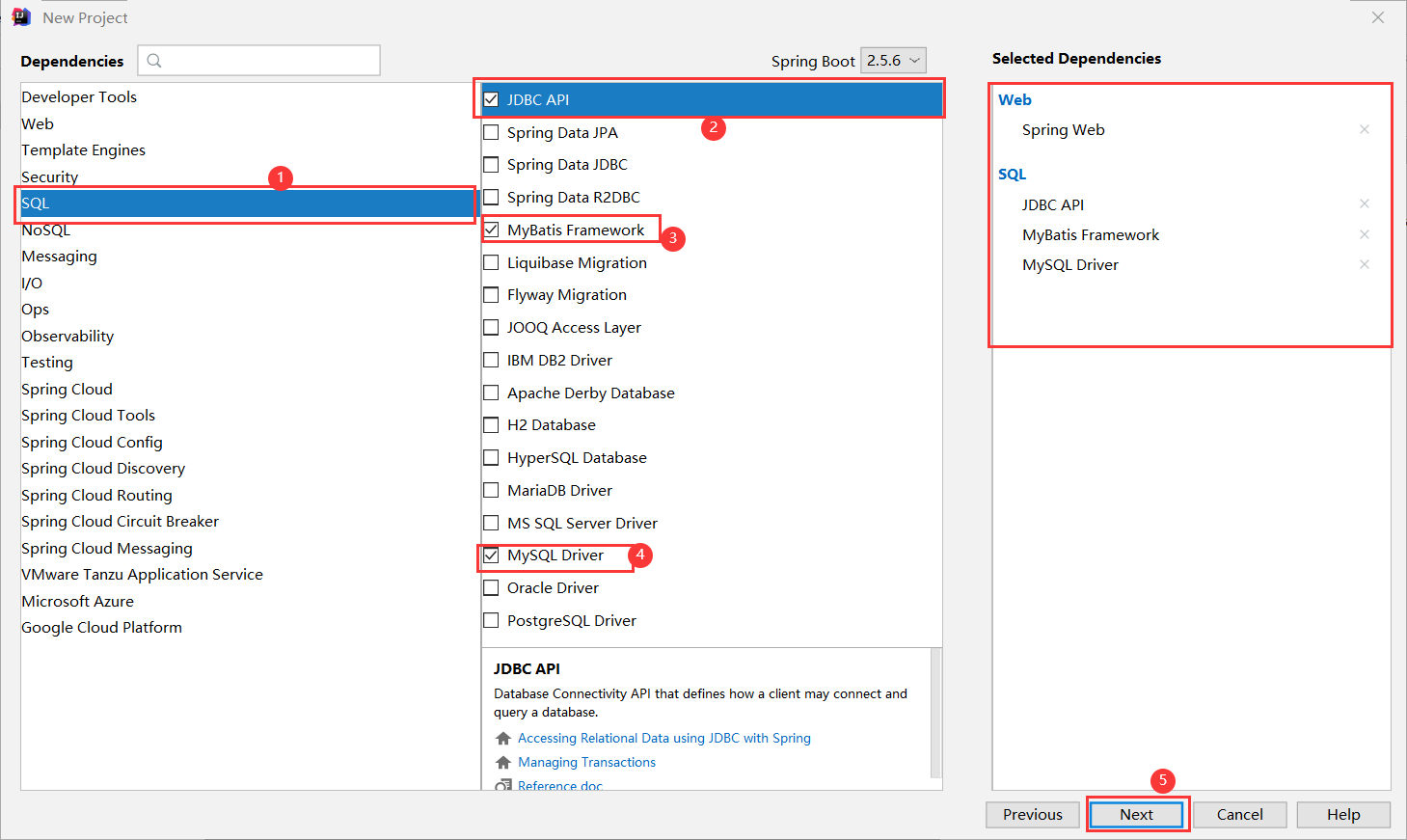
6.输入文件名,选择地址,点击Finnish就创建完成了:

2)创建包和文件(以及文件代码)
1.完整项目可以在我的github上面获取:获取地址
2.创建文件
①在src–>main–>java–>com.mybitis(自动创建的)下,创建四个包分别为:controller、entity、service、mapper,又在包下创建四个java文件:UserController、User、UserMapper(该文件为接口)、UserService。
UserController.java
package com.mybitis.controller;
import com.mybitis.entity.User;
import com.mybitis.service.UserService;
import org.springframework.beans.factory.annotation.Autowired;
import org.springframework.web.bind.annotation.PathVariable;
import org.springframework.web.bind.annotation.RequestMapping;
import org.springframework.web.bind.annotation.RestController;
import java.util.List;
@RestController
@RequestMapping("/user")
public class UserController {
@Autowired
private UserService userService;
@RequestMapping("/getAllUser")
public List<User> findAll(){
return userService.findAllUser();
}
@RequestMapping("/getUserByUserID/{userid}")
public List<User> findUserByUserId(@PathVariable int userid){
return userService.findUserByUserId(userid);
}
@RequestMapping("/getUserByUsername/{username}")
public List<User> findUserByUsername(@PathVariable String username){
return userService.findUserByUsername(username);
}
@RequestMapping("/insertUser")
public User insertUser(User user){
return userService.insertUser(user);
}
@RequestMapping("/updateUser")
public int updateUser(User user){
return userService.updateUser(user);
}
@RequestMapping("/deleteUser")
public int deleteUser(User user){
return userService.deleteUser(user);
}
}
User.java
package com.mybitis.entity;
public class User {
private int userid;
private String username;
private String password;
public int getUserid() {
return userid;
}
public void setUserid(int userid) {
this.userid = userid;
}
public String getUsername() {
return username;
}
public void setUsername(String username) {
this.username = username;
}
public String getPassword() {
return password;
}
public void setPassword(String password) {
this.password = password;
}
@Override
public String toString() {
return "User{" +
"userid=" + userid +
", username='" + username + ''' +
", password='" + password + ''' +
'}';
}
}
UserService.java
package com.mybitis.service;
import com.mybitis.entity.User;
import com.mybitis.mapper.UserMapper;
import org.springframework.beans.factory.annotation.Autowired;
import org.springframework.stereotype.Service;
import java.util.List;
@Service
public class UserService {
@Autowired(required=false)
public UserMapper userMapper;
public List<User> findAllUser(){
return userMapper.findAllUser();
}
public List<User> findUserByUserId(int userid){
return userMapper.findUserByUserId(userid);
}
public List<User> findUserByUsername(String username){
return userMapper.findUserByUsername(username);
}
public User insertUser(User user){
userMapper.insertUser(user);
return user;
}
public int updateUser(User user){
return userMapper.updateUser(user);
}
public int deleteUser(User user){
return userMapper.deleteUser(user);
}
}
UserMapper.java
package com.mybitis.mapper;
import com.mybitis.entity.User;
import org.apache.ibatis.annotations.Mapper;
import java.util.List;
@Mapper
public interface UserMapper {
public List<User> findAllUser();
public List<User> findUserByUserId(int userid);
public List<User> findUserByUsername(String username);
public int insertUser(User user);
public int updateUser(User user);
public int deleteUser(User user);
}
②在resources里建一个mapper包,包下建一个与上面同名的一个UserMapper的xml文件。
UserMapper.xml
<?xml version="1.0" encoding="UTF-8"?>
<!DOCTYPE mapper PUBLIC "-//mybatis.org/DTD Mapper 3.0//EN" "http://mybatis.org/dtd/mybatis-3-mapper.dtd">
<mapper namespace="com.mybitis.mapper.UserMapper">
<resultMap id="result" type="com.mybitis.entity.User">
<result column="userid" jdbcType="INTEGER" property="userid" />
<result column="username" jdbcType="VARCHAR" property="username" />
<result column="password" jdbcType="VARCHAR" property="password" />
</resultMap>
<select id="findAllUser" resultType="com.mybitis.entity.User">
select * from user;
</select>
<select id="findUserByUserId" resultType="com.mybitis.entity.User">
select * from user where userid=#{userid};
</select>
<select id="findUserByUsername" resultType="com.mybitis.entity.User">
select * from user where username=#{username};
</select>
<insert id="insertUser" parameterType="com.mybitis.entity.User" keyProperty="userid" useGeneratedKeys="true">
insert into user(userid,username,password) values (#{userid},#{username},#{password});
</insert>
<update id="updateUser" parameterType="com.mybitis.entity.User">
update user set username=#{username},password=#{password} where userid=#{userid};
</update>
<delete id="deleteUser" parameterType="com.mybitis.entity.User">
delete from user where userid=#{userid};
</delete>
</mapper>
③在resources里有一个application.properties文件,将该文件删除,在创建两个文件:application.yml、application-dev.yml。
application.yml
spring:
profiles:
active: dev
application-dev.yml
server:
port: 8080 #端口号
spring:
datasource:
driver-class-name: com.mysql.cj.jdbc.Driver
url: jdbc:mysql://localhost:3306/user?useUnicode=true&characterEncoding=UTF-8&serverTimezone=UTC&useSSL=false #3306/后面是数据库的名字
username: root #账户
password: xhy200104274 #数据库密码
mybatis:
mapper-locations: classpath:mapper/*Mapper.xml
总结构如下图:
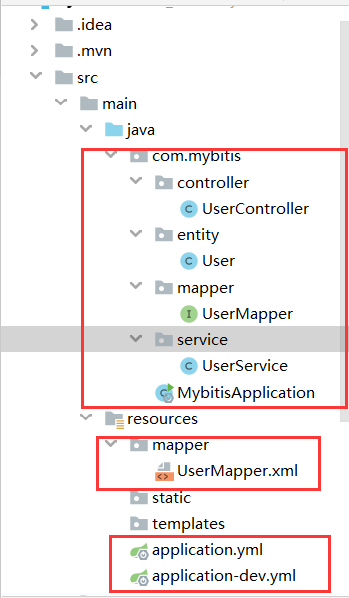
三、数据库表的创建
使用navicat:

表中内容:
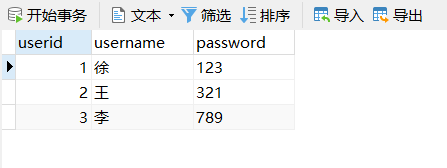
四、结果
1.使用的postman测试:
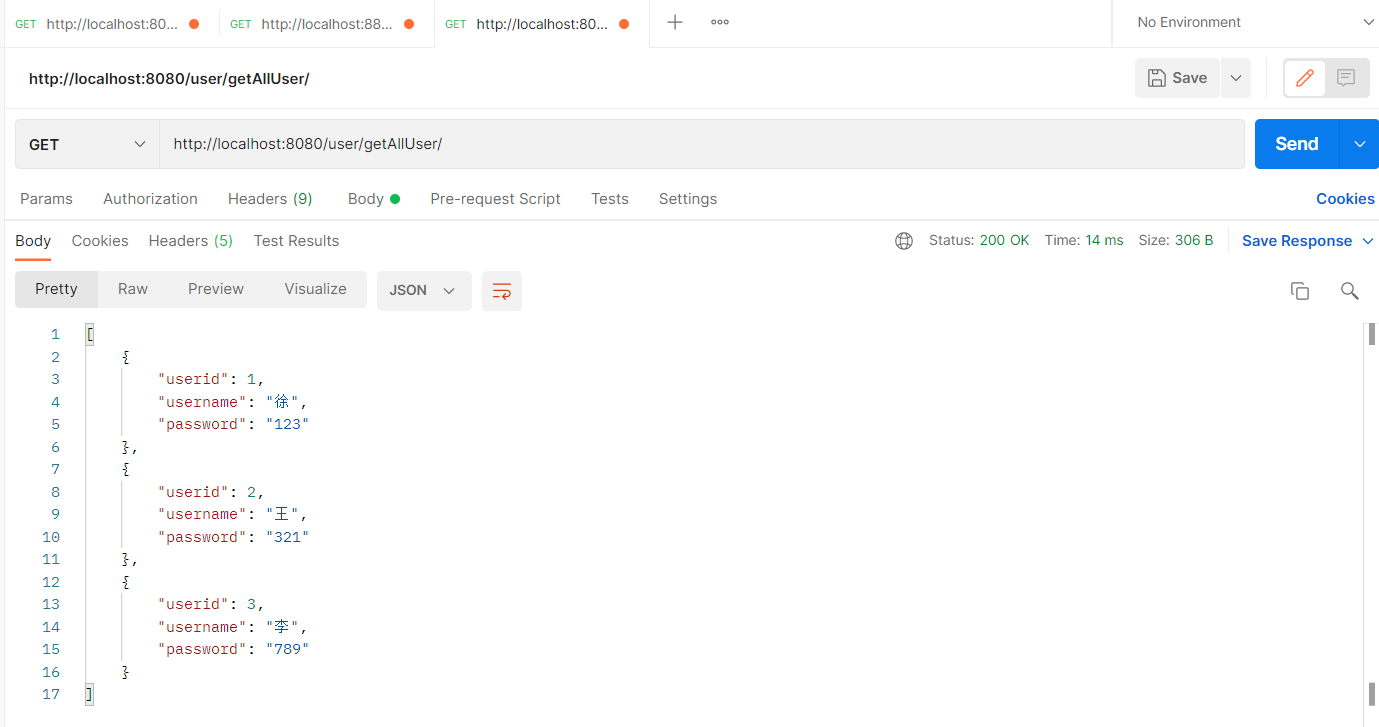
2.通过id查名字:

3.插入:
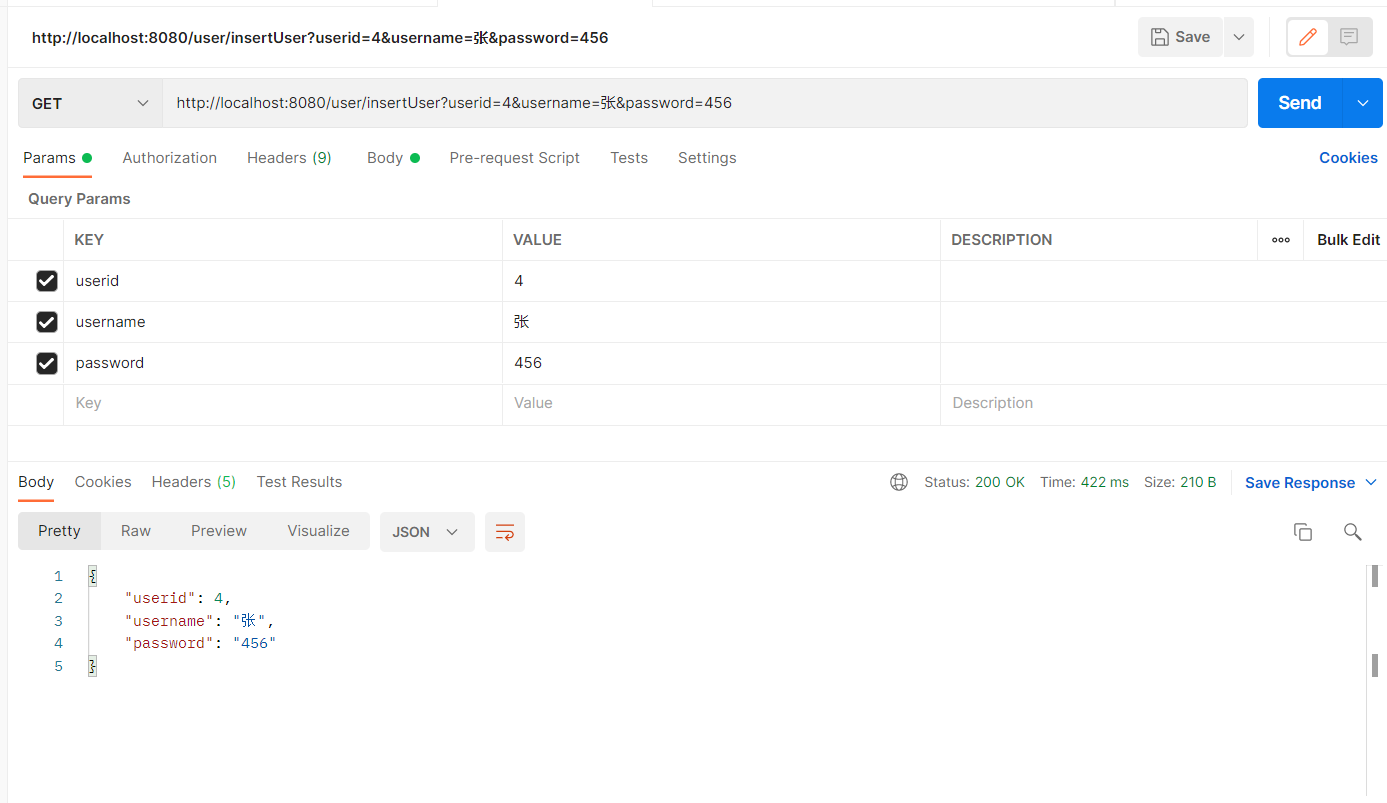

4.更新:

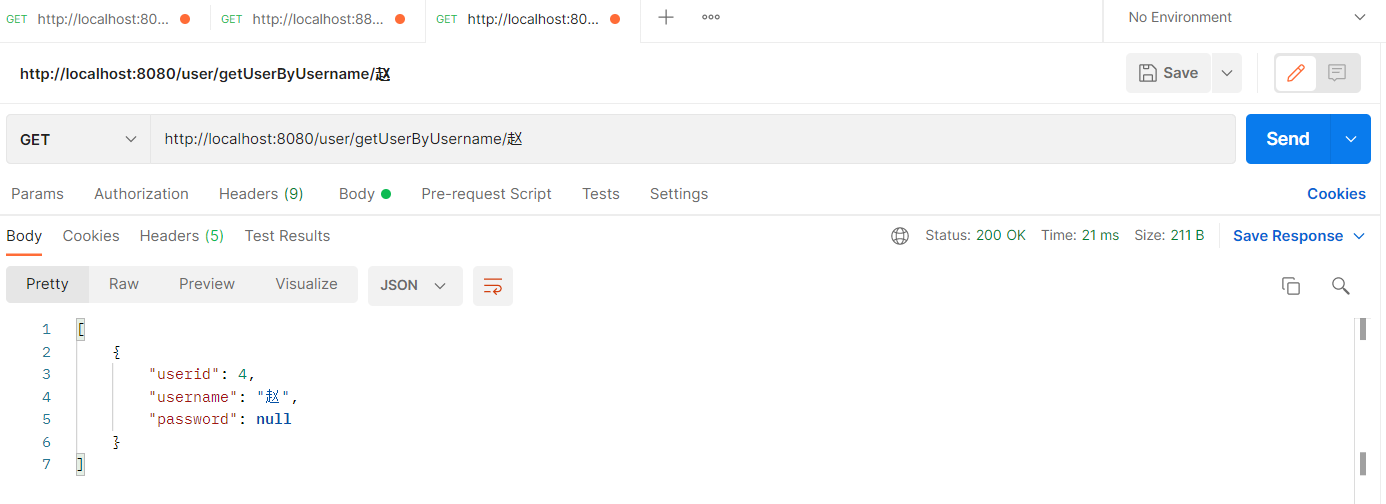
5.删除:

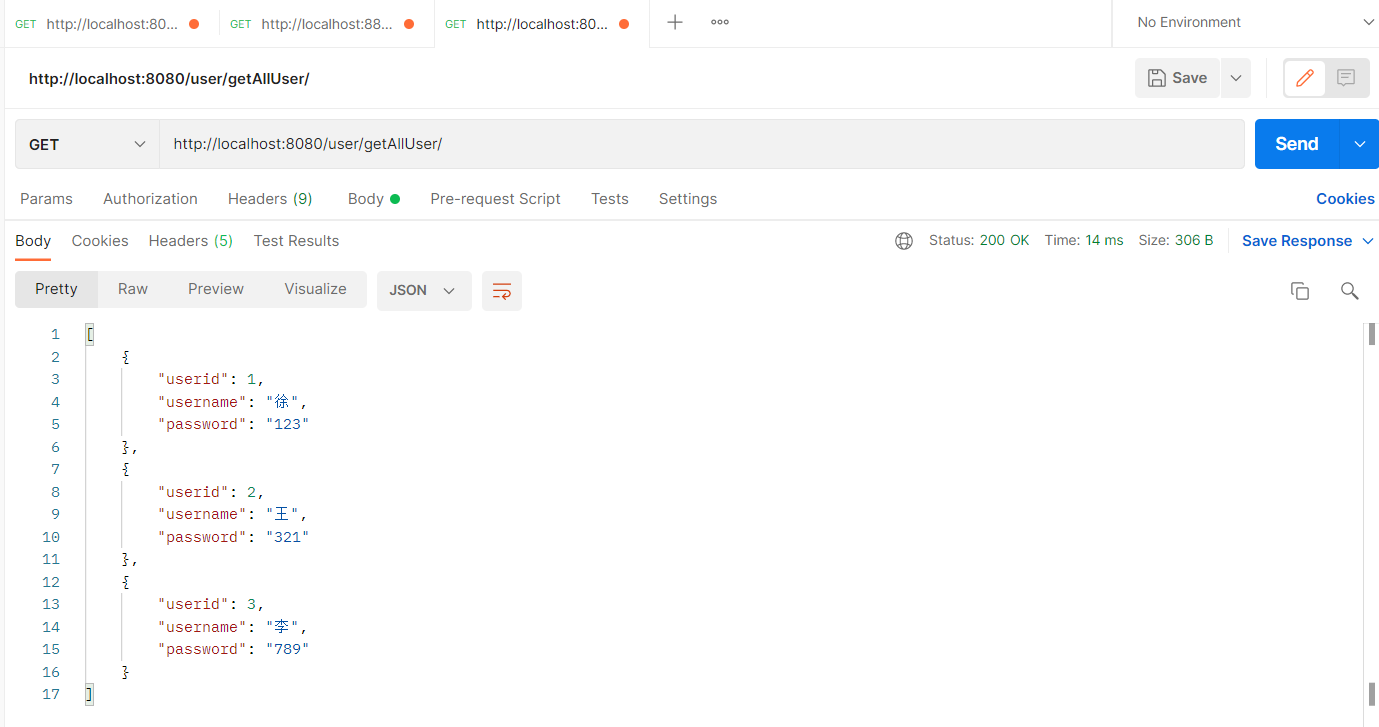
五、总结
这次实验还是简单的,就是要将配置弄好,MyBatis与JDBC还是有很大差别,将SQL的语句添加到了配置文件里,将Java和SQL语句分开,在SQL语句多的时候便于管理和书写。
六、参考链接
1.【蠢事】Spring Boot项目启动访问页面报错Initializing Spring DispatcherServlet ‘dispatcherServlet’
2.springboot-服务启动后访问报错Initializing Spring DispatcherServlet ‘dispatcherServlet‘
3.异常:This application has no explicit mapping for /error, so you are seeing this as a fallback解决方法
4.SpringBoot启动报错:HikariPool-1 - Exception during pool initialization.
5.IDEA2019开发Spring Boot整合Mybatis实现User的CRUD(增读更删)
6.Mybatis与JDBC的对比超详细笔记
最后
以上就是俊逸汉堡最近收集整理的关于使用MyBatis连接数据库一、JDBC和MyBatis的简介和比较二、创建项目和配置三、数据库表的创建四、结果五、总结六、参考链接的全部内容,更多相关使用MyBatis连接数据库一、JDBC和MyBatis内容请搜索靠谱客的其他文章。








发表评论 取消回复